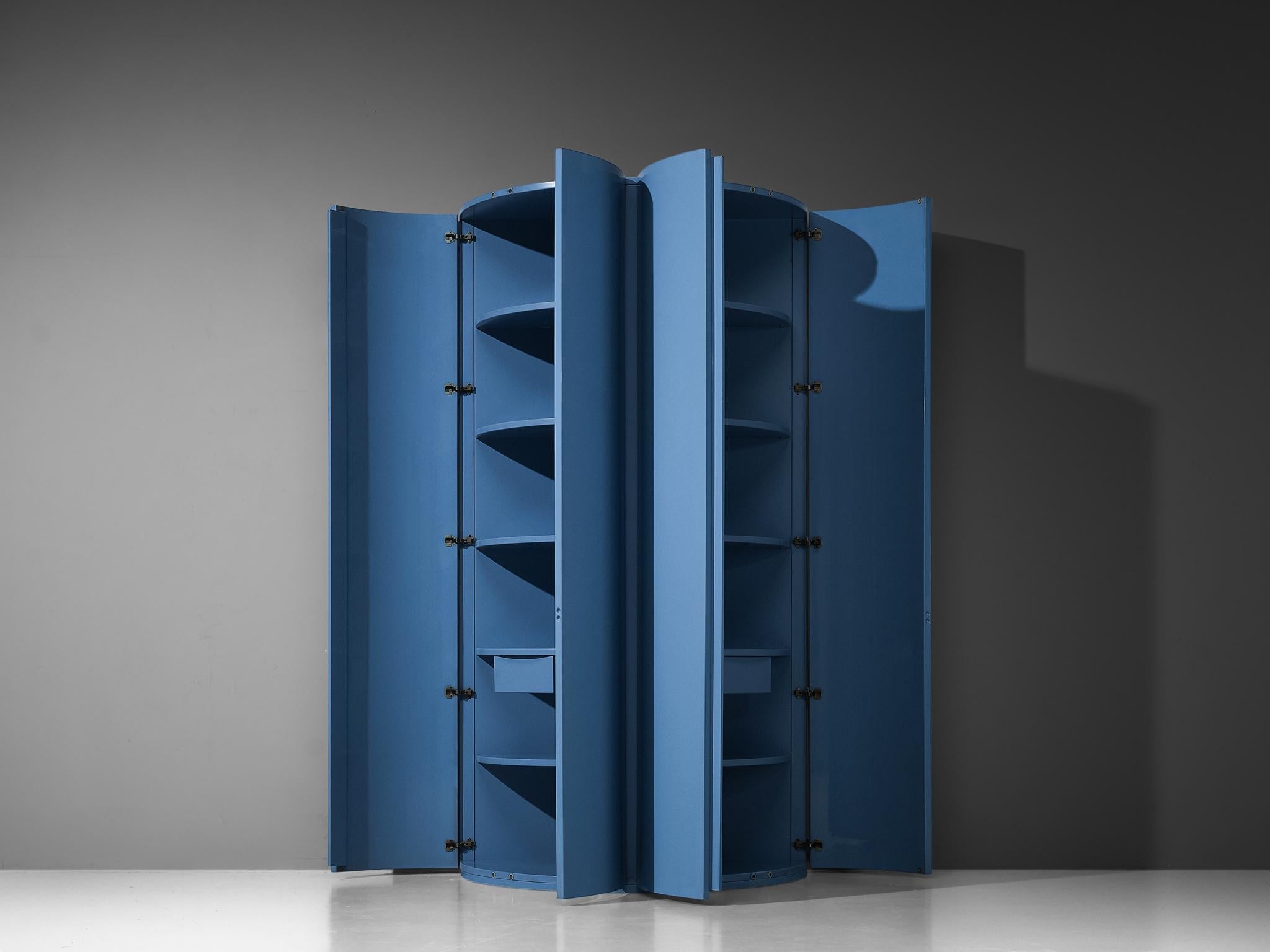
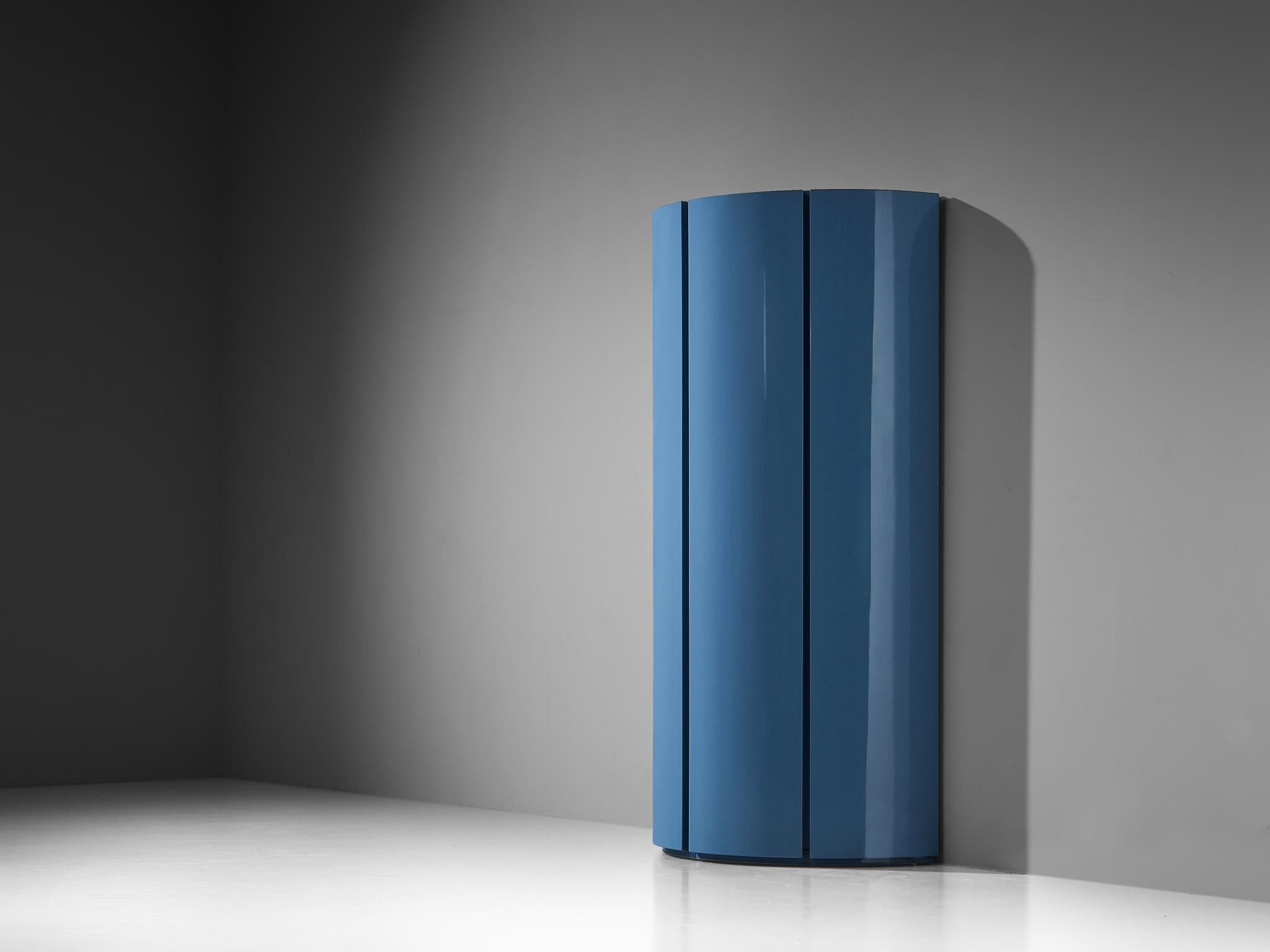
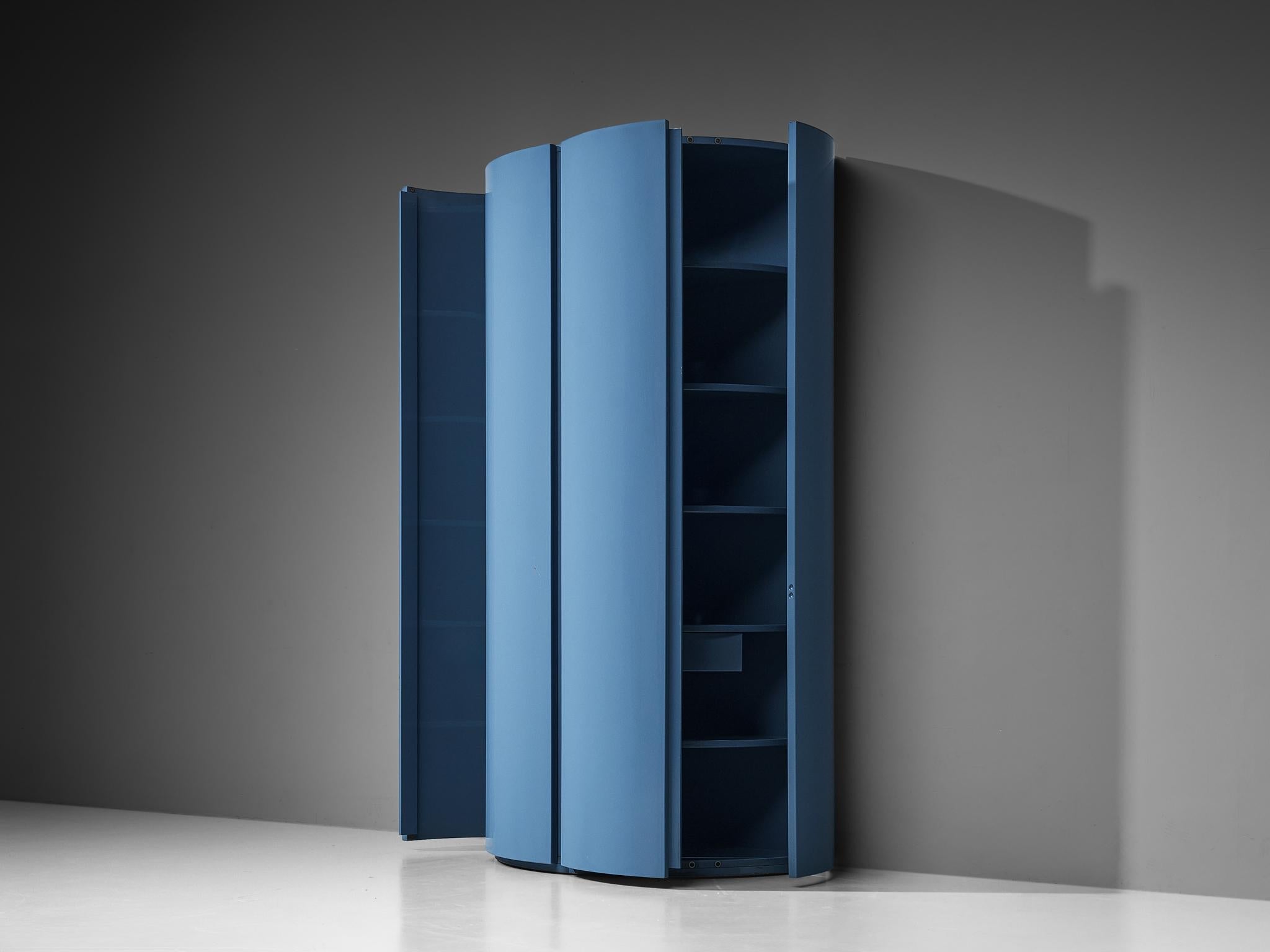
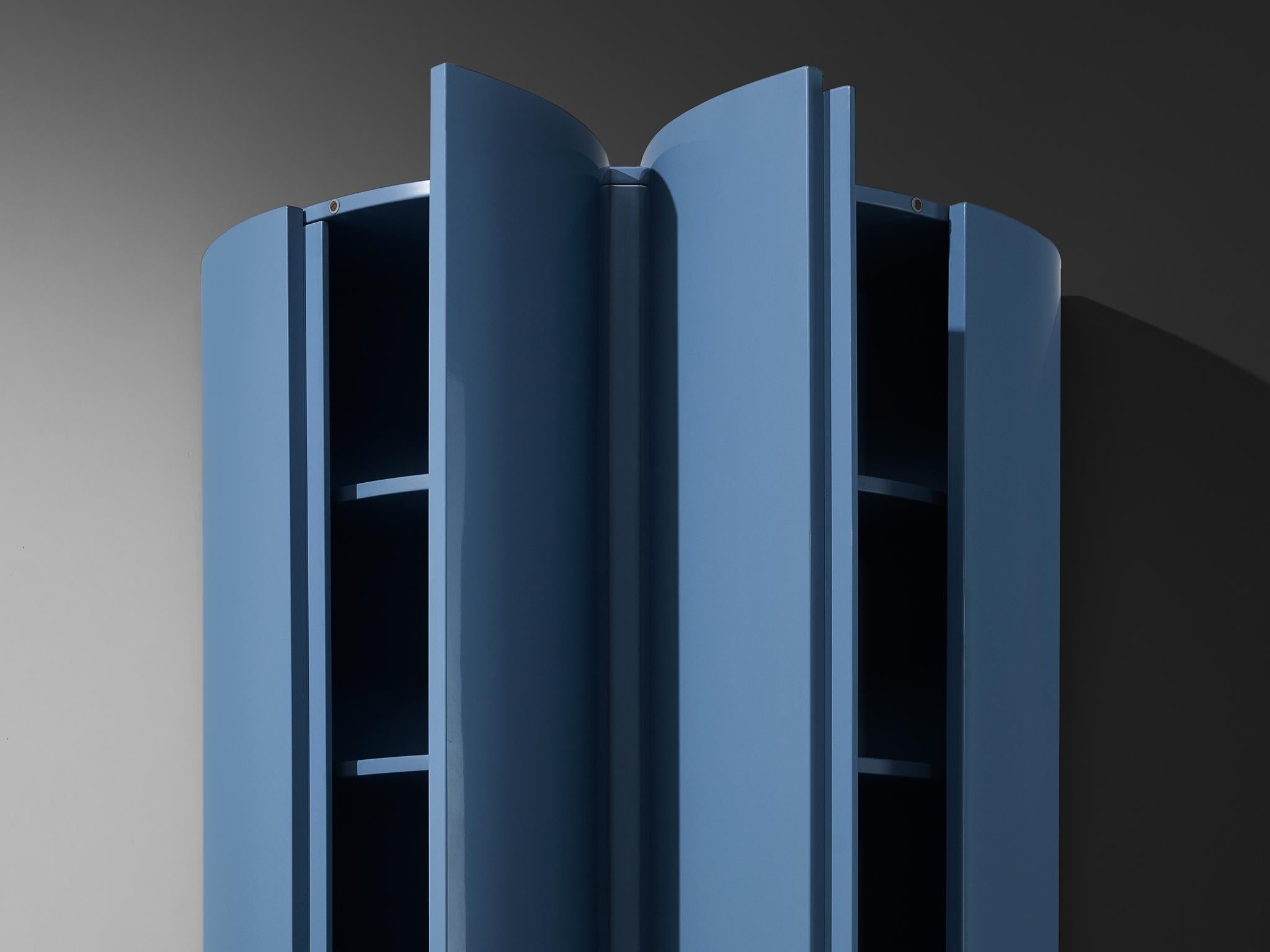
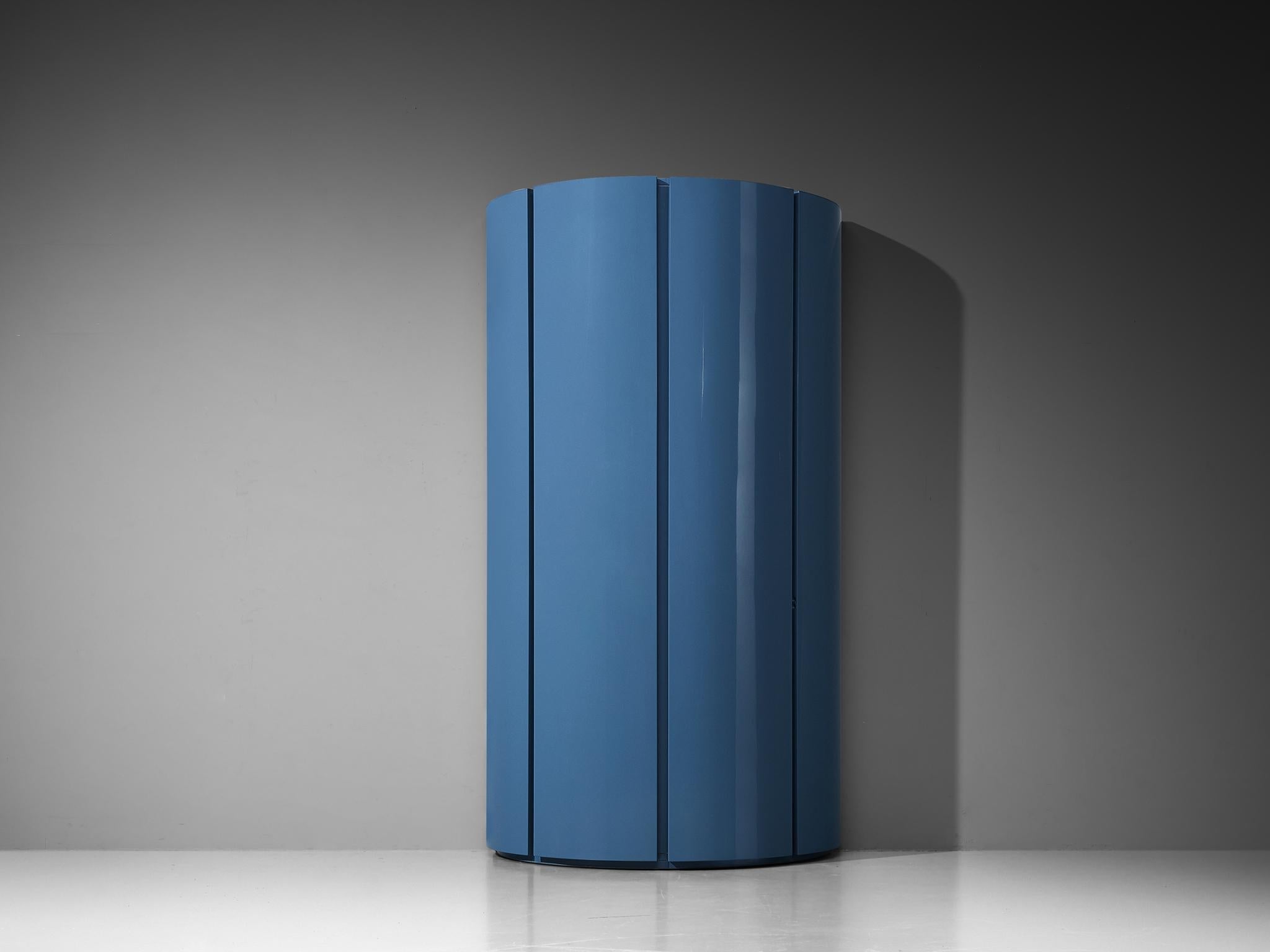
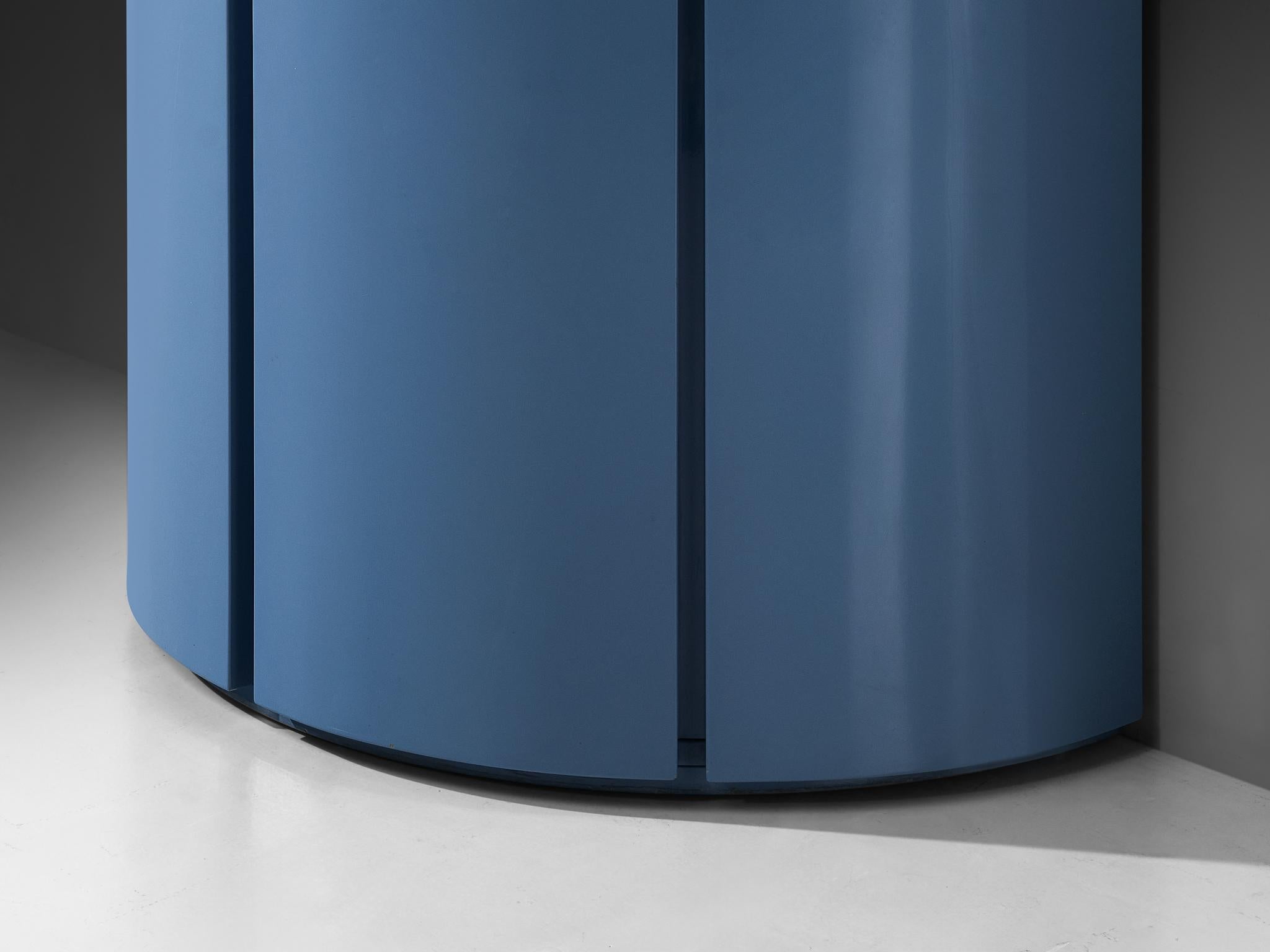
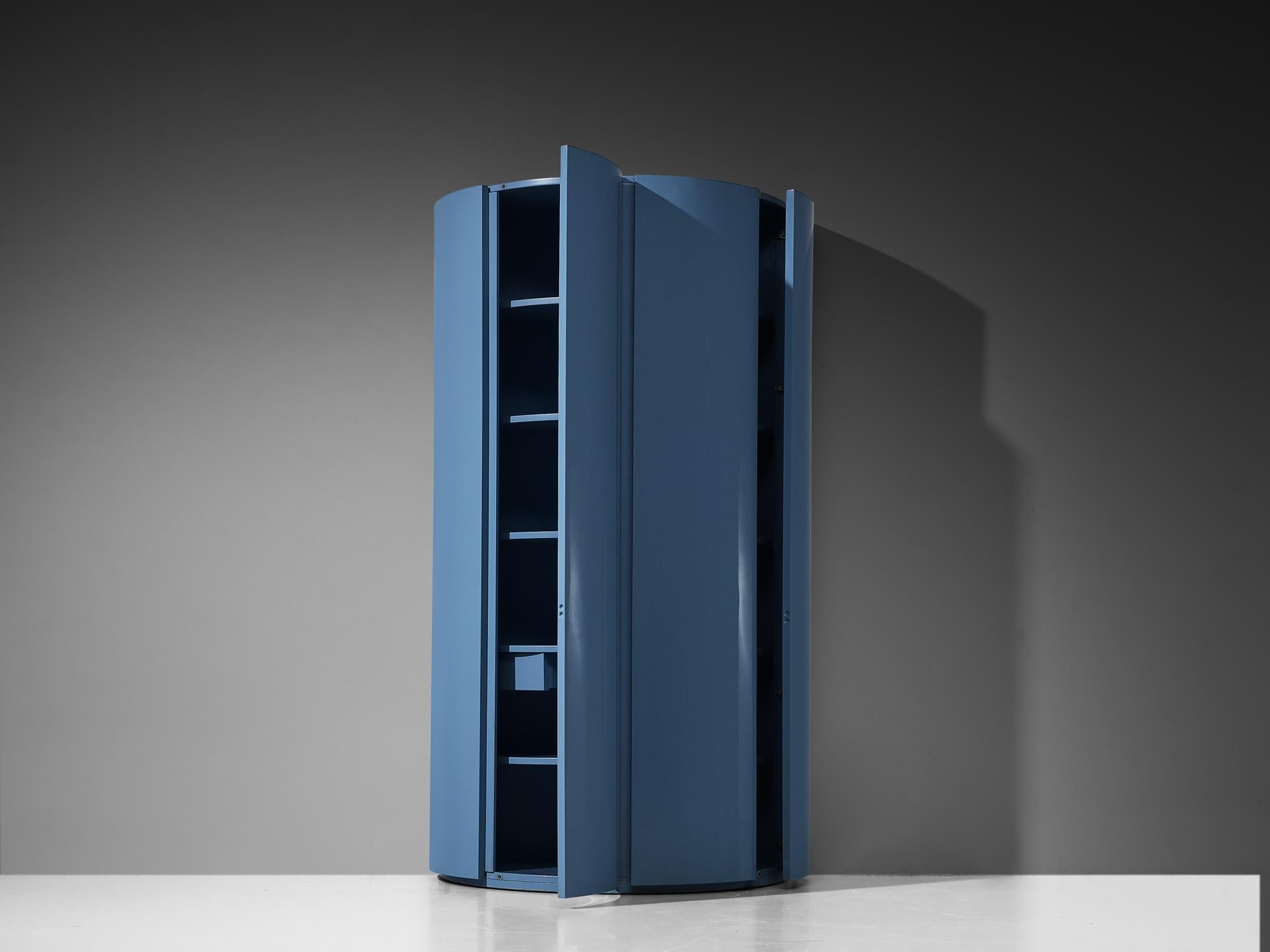
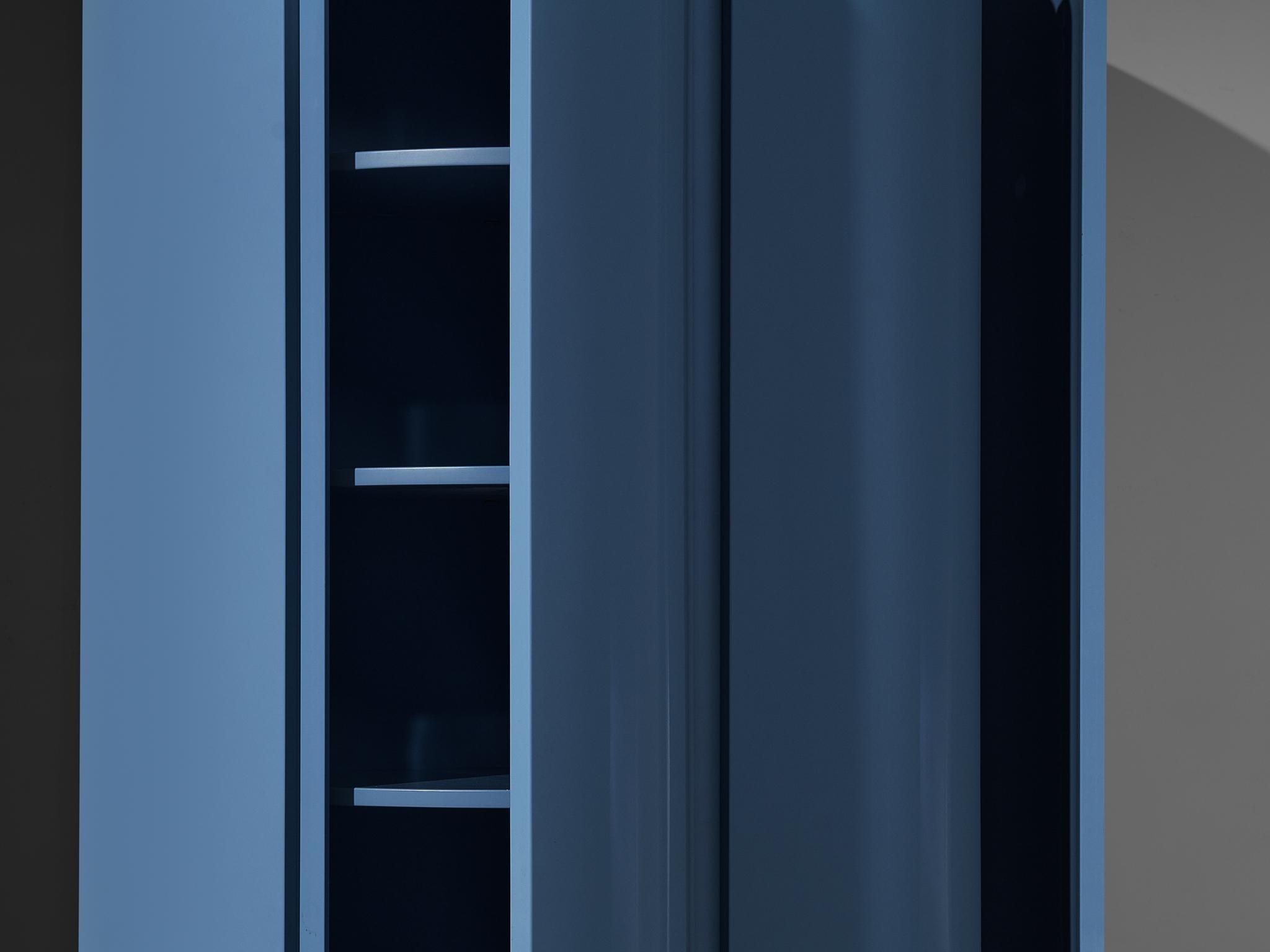
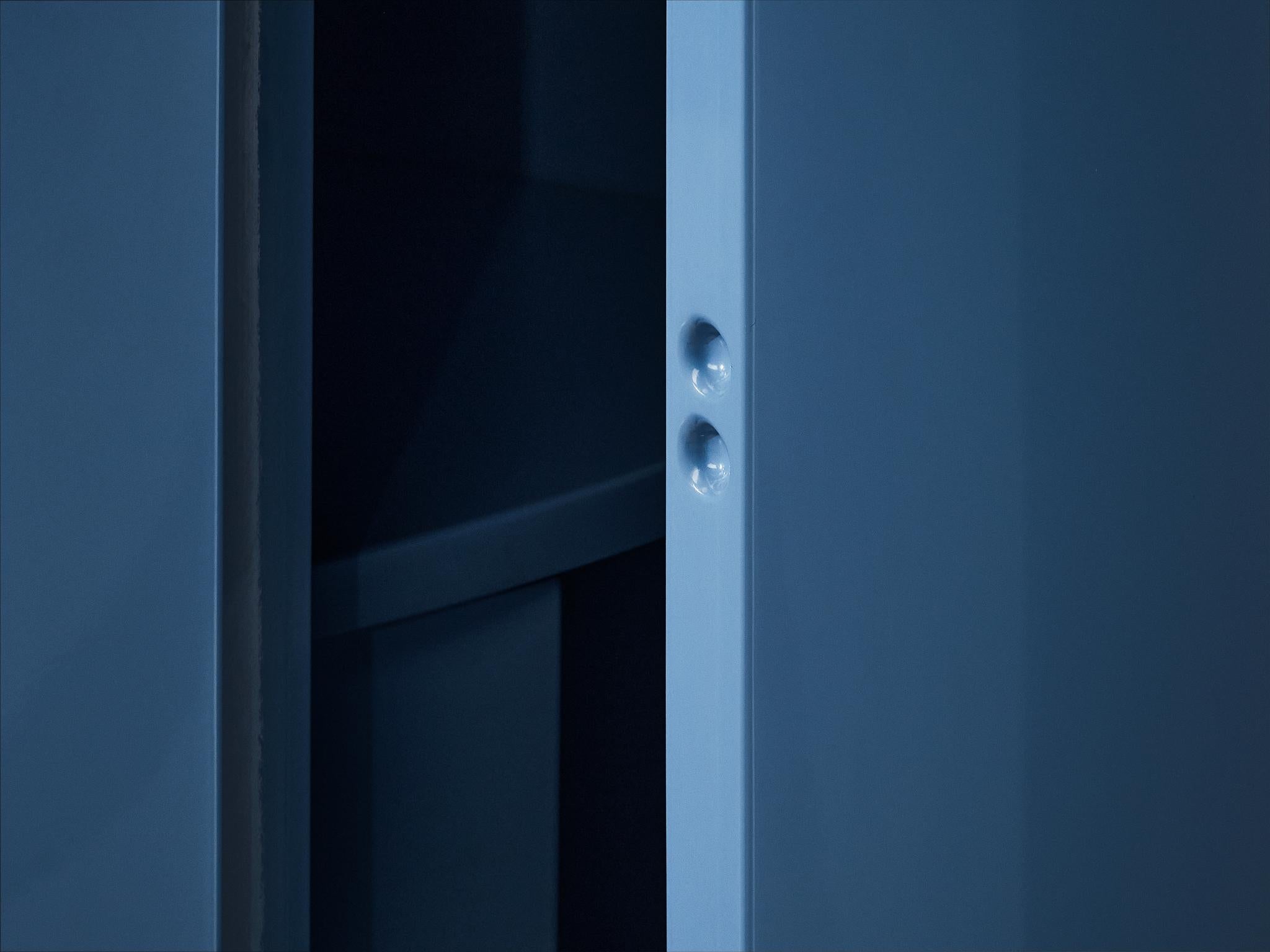
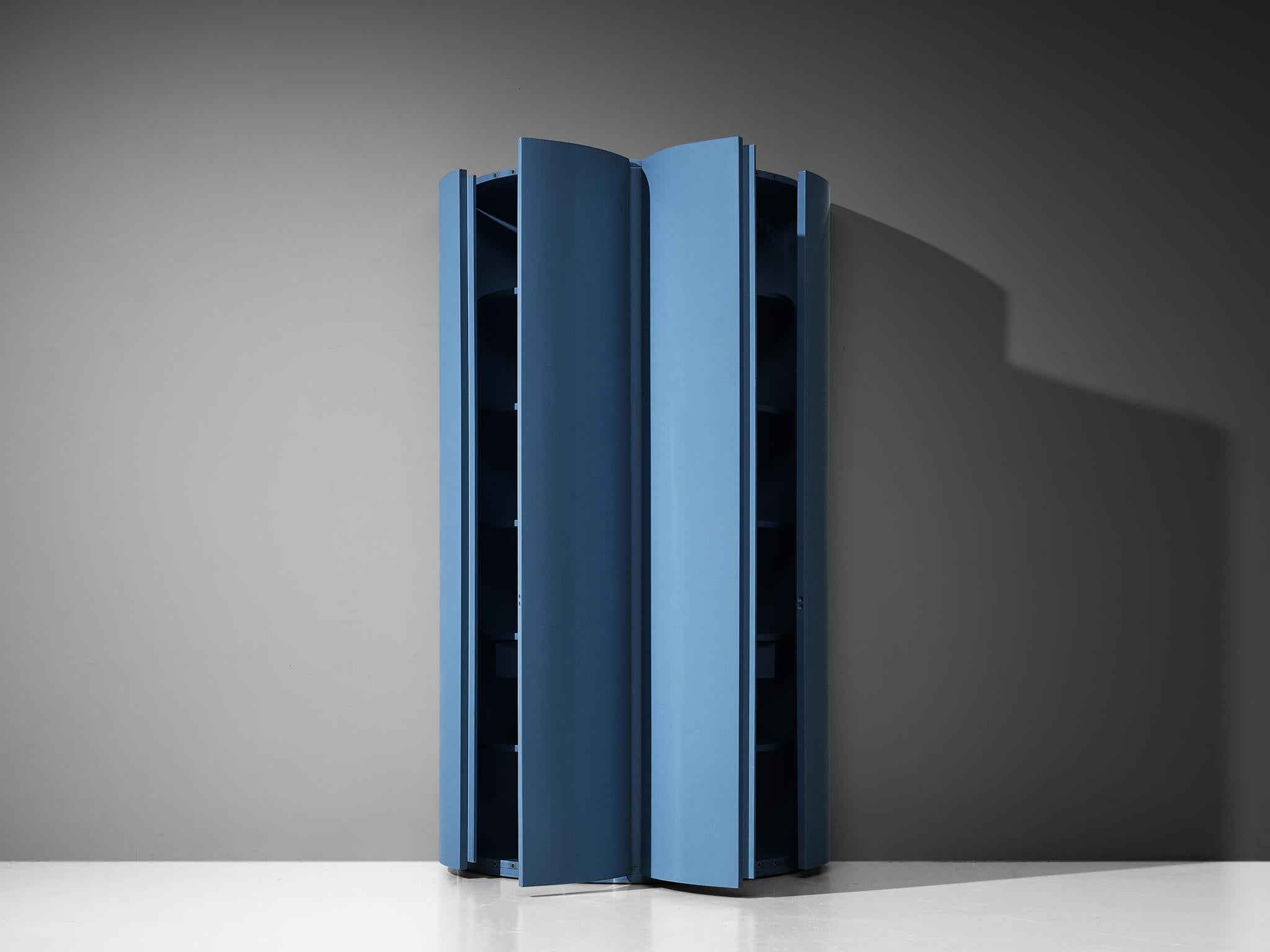
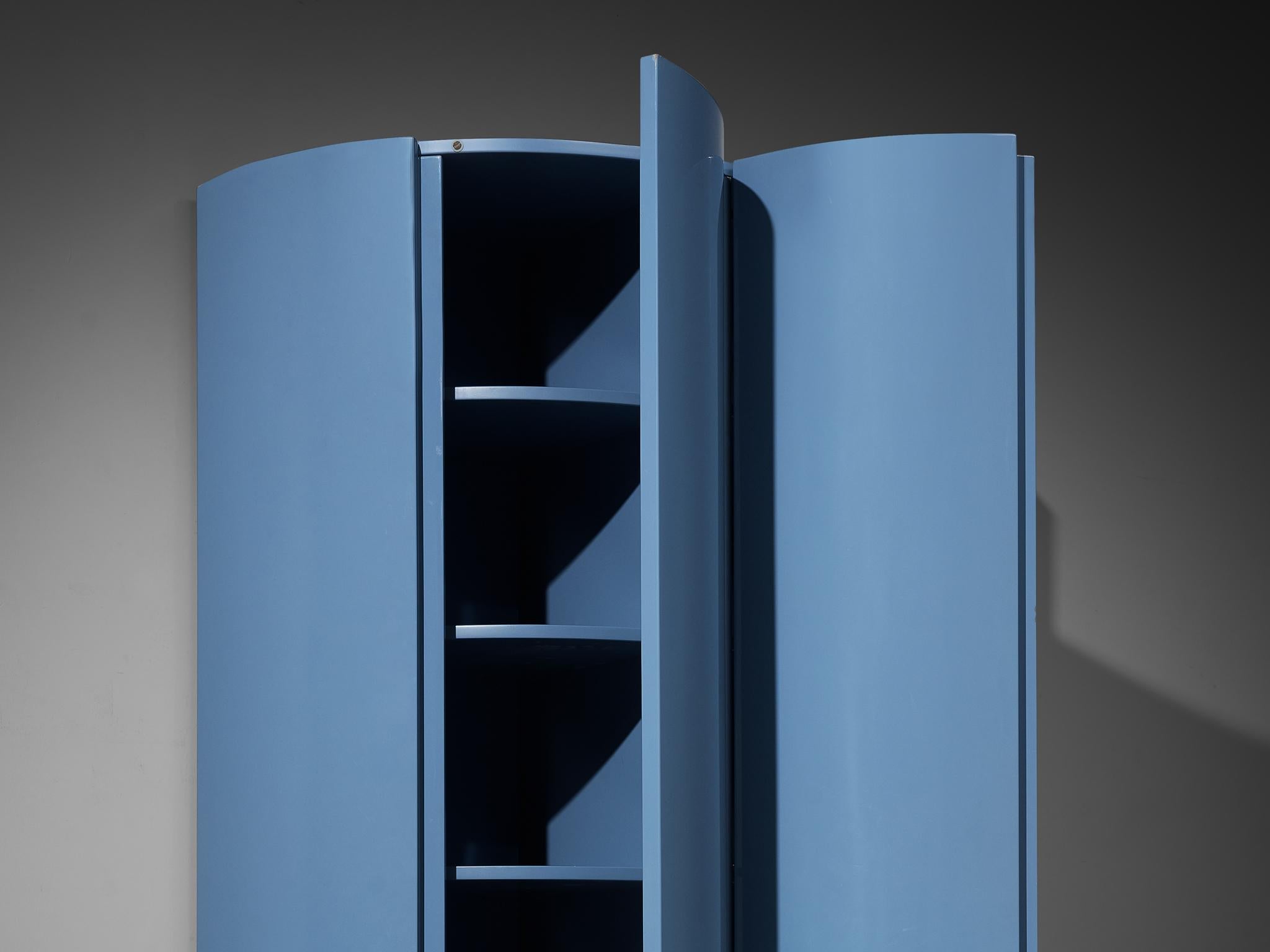
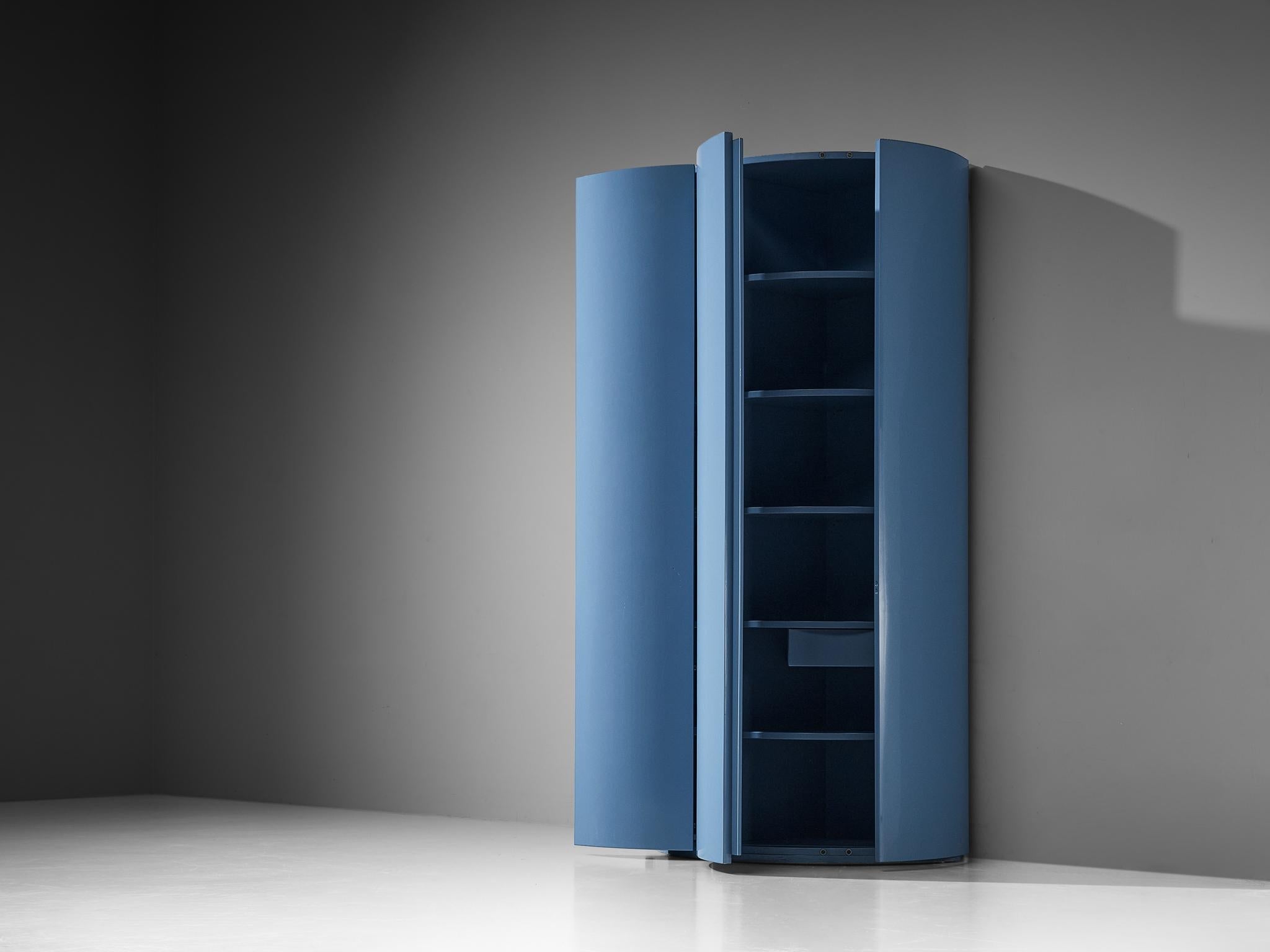
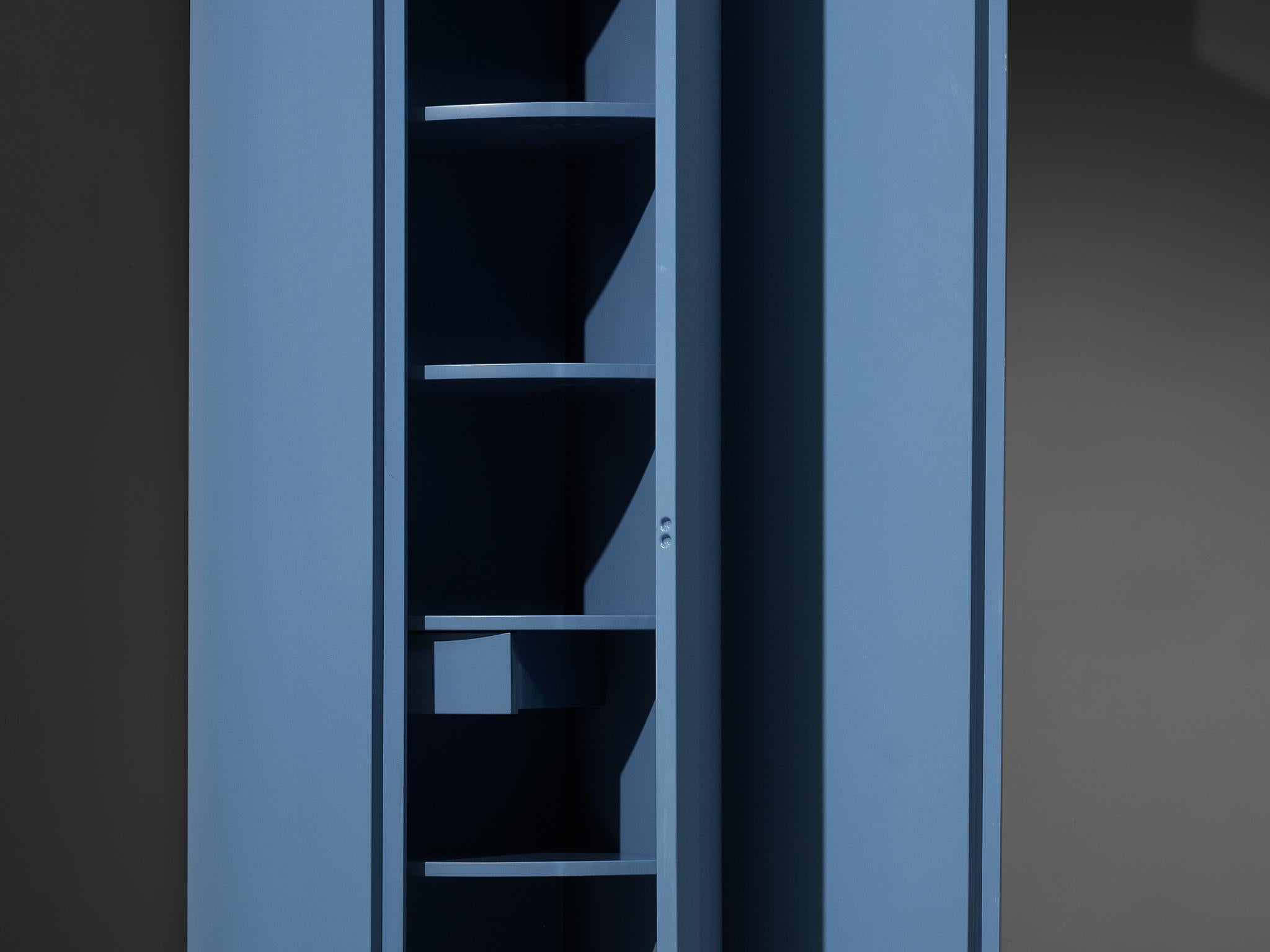
Ambrogio Tresoldi e Alberto Salvati Wardrobe Cabinet in Purple Blue Wood
Ambrogio Tresoldi and Alberto Salvati, cabinet / wardrobe, lacquered wood, Italy, 1970s
Ambrogio Tresoldi and Alberto Salvati began their careers at the Politecnico di Milano under the mentorship of Carlo De Carli. After graduating in 1960, they embarked on a journey together, making significant contributions to construction, furniture, and industrial design until 1980. Tresoldi and Salvati introduced a new architectural concept that diverged from the dominant rationalist movement influenced by figures like Le Corbusier. Their innovative approach transcended the functionalist constraints of rationalism, embracing the immaterial and spiritual aspects of architectural design.
Their artistic vision centered around creating a "space of freedom," viewing space as a playful dimension. They coordinated furniture and fixtures seamlessly and sometimes even eliminated furniture altogether, designing enclosed spatial shells that became integral parts of the architecture. Their design philosophy for living spaces was grounded in three main principles: gestaltic geometry, the timbricity of color, and structural simplicity. From the outset of their twenty-year collaboration, Salvati and Tresoldi utilized these elements to adapt modern psychology to create habitable spaces suitable for contemporary life. Color became a key feature in their designs, with a diverse palette used to define and transform spaces. Their spaces were never empty, brought to life by the forms and colors within them, avoiding the typical clutter of objects and furniture.
In terms of spatial design, Salvati and Tresoldi's interior projects emphasized a triad of columns, half-columns, and curved spaces. These elements contrasted sharply with the rectilinear, box-like spaces of contemporary architecture. In an era where mechanistic ideologies prevailed, curves were often seen as wasteful and irrational. Rectilinear planes were deemed more rational and masculine, while curvilinear planes were considered more sensual and feminine. For Salvati and Tresoldi, these elements provided environmental fluidity and challenged the rigidity of prevailing geometric norms. Their work masterfully combined these three design elements, enhanced by full, vibrant, and emotionally expressive colors.
Their commitment to balancing shape, material, and color led them to collaborate with other artists. They believed in working as equals, with all disciplines holding balanced importance in a project. This approach was rooted in the old synthesis of integrating the arts, which they interpreted in their unique way to create unified projects where various forms of knowledge converged. The renowned architect Gio Ponti had advocated for interdisciplinarity in architecture in the early 1930s, promoting collaboration between architects and other fields in Domus magazine. Ponti recognized the impact of Salvati and Tresoldi's work early on, and their projects were regularly featured in Domus, cementing their influence in the architectural world.
The present cabinet exemplifies Salvati and Tresoldi's philosophy on living space. It features a half-column cylindrical structure painted in a dazzling lilac color, embodying their commitment to vibrant, symbolic hues. This storage unit was part of an Italian apartment interior designed by Salvati and Tresoldi, which included other pieces that spoke the same design language. The curved door panels open to reveal multiple shelves structured along its length with an additional drawer, showcasing their innovative approach to combining form and function within a harmonious, playful space.
VAT within the EU: When buying or delivering an item within the EU, VAT usually applies and will be added.
Choose options













Product Details